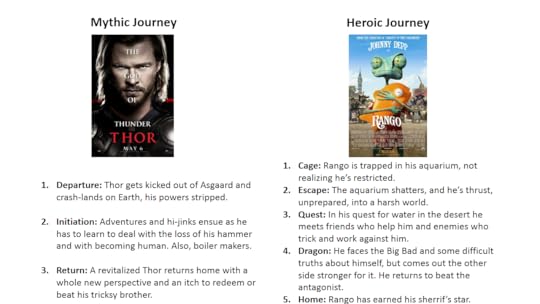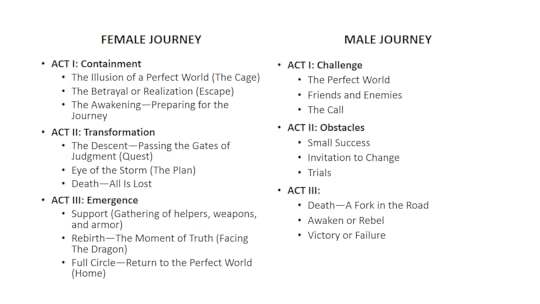Author’s Log: The Journey’s The Thing
 The thing about this whole writing gig is that once you understand and start practicing the underpinnings of plot structure, you tend to see it EVERYWHERE. You can’t help it. The Tech Monkey and I will be watching a movie, and all the while he’s enjoying a well-crafted plot twist, my inner narrative-casualty freak flag starts waving loud and proud. The consequence of this is that I have a fairly good idea about what’s going happen, simply because it must happen, based on where in the plot incline we are.
The thing about this whole writing gig is that once you understand and start practicing the underpinnings of plot structure, you tend to see it EVERYWHERE. You can’t help it. The Tech Monkey and I will be watching a movie, and all the while he’s enjoying a well-crafted plot twist, my inner narrative-casualty freak flag starts waving loud and proud. The consequence of this is that I have a fairly good idea about what’s going happen, simply because it must happen, based on where in the plot incline we are.
TM: How could you possibly know….
WM: *shrugs* It’s Midpoint. Everything changes.
TM: ?! o.O
Yeah, so…everywhere. As you can imagine, this makes me LOTS of fun to go to movies with.
That being said, I still watch it to see it done well. I imagine this is how magicians watch their counterparts—with an eye for the well-crafted and subconscious consideration as to how they would do it.
But story is so much more than just plot. Story is mostly about character. People. Events aren’t the only things that change with every uptick on the ol’ plot barometer. It’s important that characters are changed by them, too; otherwise, they’re in danger of flat lining.
And if the characters flat line, well…bust out the paddles, ‘cause the story’s in danger of dying, too.
I approach a character arc a couple of different ways, depending on the project. This doesn’t mean I’m focusing more on character and less on plot (or vice versa), it just means I’m focusing differently. There are a couple of classic arcs to choose from:
• The Mythic Journey–1.) The protagonist leaves home (Departure); 2.) Crosses a threshold into Another World (Initiation); 3.) and Re-enters from Another World, returning home (Return).
• The Heroic Journey—1.) Cage (an inner conflict that restricts); 2.) Escape (action motivated by the restriction); 3.) Quest: Internal conflict meets and reacts to external conflict, or, as I like to refer to it, The Road To Perdition; 4.) Dragon (Collision of forces or Good vs Evil–where the metal meets the meat); and 5.) Home (the reward).
If a story’s going to be action-oriented with the primary conflict being external, like Keepers of the Flame, then I tend to go with the Heroic Journey. However, if a story’s going to be more character-driven with the primary conflict being internal, then I’m more attracted to the Mythic Journey. Neither is wrong or right, it just depends on personal preference. For instance, Big Dang Projeckt follows the Heroic arc, but Waking Muse #1 utilizes the Mythic.
Hey, how ‘bout some examples of each arc? YAY, POWERPOINT!!
*Power Point Dance*

Interesting enough, Thor also follows the character journey of The Descent of Innana, who journeys to the underworld and is stripped of all her powers, weapons, and armor until she grows and learns enough wisdom to wield them again.
Once I have my character arc points outlined and placed next to my plot incline, I make a handy-dandy spreadsheet, because I’m now going to outline my entire character arc for my protagonist. On said, handy-dandy spreadsheet, I use the first column to spell out the events of each of the nine plot points on my incline. In the next column I’m going to map out my character journey, either Male or Female.

Whether a character takes a Female Journey or a Male Journey has little to do with gender. For example, Thor takes a Female Journey, and at the end of the movie invites his brother Loki to change and begin his own journey–which Loki denies. In Keepers 2, my protagonist Callie takes the Male Journey, and in chosing to awaken instead of rebelling might win or lose her final battle–and at what cost?
At the end of all this plotting and spiritual journey, I now have a fully developed outline of nine blocks that more or less equals a rough draft. I know what I have to write and when, because my story is already–more or less–written.





